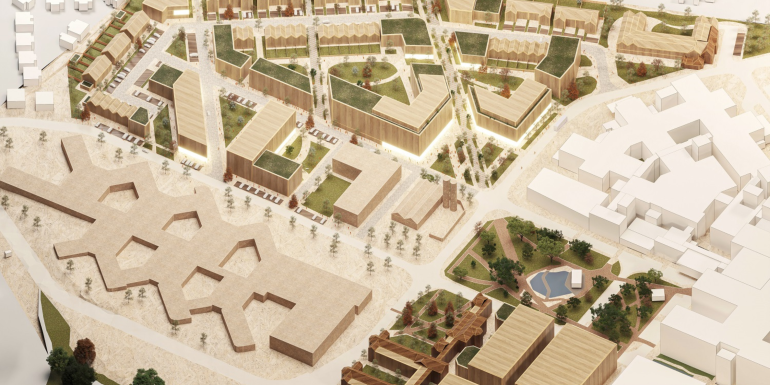Bernard Interiors is on a mission to shake up some of the stereotypes that often define the interiors of the care and retirement industry.
Prioritise safety first
Taking a holistic approach to later living is essential. Of course, spaces need to be warm and homely but also highly functional.
One example of how interior designers can merge these two concepts is with furniture. Chairs in particular need to be the right height to make the transition from sitting to standing as seamless as possible, but they also need to be aesthetically pleasing. Often, the best way to tackle this issue is to design bespoke furniture which is both ergonomic and attractive.
To maximise the safety of residents, non-slip flooring is crucial, especially in wet areas. We work with specialist flooring suppliers to create safe and appealing surfaces. Carpets also need to incorporate patterns and colours but be impervious, washable, and durable, making light work of any spillages.
Sensible use of space is also a priority when designing for later living. For example, furniture should be an appropriate distance apart to ensure residents have enough space. The same can be said for spas and pool areas: there needs to be room for residents to enjoy, without impediments, to minimise fall risks.
Make every ray of sunshine count
Light plays a very important role in design. Natural light, in particular, can have positive effects on well-being so to ensure that every ray of natural light is maximised, reflective surfaces and light tones and colours can be used where appropriate, ensuring every sunbeam bounces through the room.
For residents living with dementia, natural light also helps to regulate sleep cycles and signal the time of day. This in turn reduces confusion and helps orientate them to the morning, afternoon, and evening.
Never forget the little touches
To make a house a home, the features within need to resonate with residents.
Each and every one of our projects starts with exploring local culture, which is what we use for inspiration for the design stage.
From here, we will incorporate features that reflect key parts of the surrounding community. For example, our project in Skipton houses multiple references to the town’s industrial past.
In particular, the canal side cafe is an ode to the spinning, weaving, and manufacturing industries of the mill, thanks to the burgundy ceramic wall tiles, rough green plaster wall, exposed original brickwork, and vintage pendant lighting.
These creative ways of paying homage to the local area encourage residents learn more about the rich heritage of their area. This will pique their curiosity and help them to keep learning more about history and their home.
About
Bernard Interiors have over a decade of experience working with some of the biggest names in the later living sector, including Audley Villages, Hadrian Healthcare, Yorkare Homes, and Principle Care Homes.
The design studio was named a finalist in the SBID Healthcare and Wellness Design Award two years running, and is a winner of the Knight Frank Luxury Care Home of the Year Award.
Learn more about Bernard Interiors here





